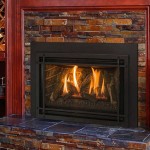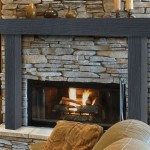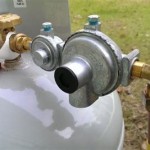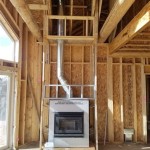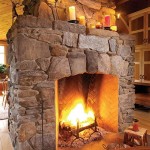Exploring the Allure and Value of Old Fireplace Surround Tiles
Old fireplace surround tiles represent a tangible link to the past, embodying the design sensibilities and craftsmanship of earlier eras. These decorative elements, often found in homes built from the Victorian period through the mid-20th century, are more than just functional components; they are artifacts that reflect the history and aesthetics of bygone times. The appeal of old fireplace surround tiles stems from their unique character, the quality of materials used, and the artistic styles they represent.
The prevalence of fireplaces as a central heating source in older homes led to a flourishing industry dedicated to creating decorative surrounds. Tile manufacturers experimented with diverse glaze techniques, intricate patterns, and relief work to produce tiles that would enhance the beauty and warmth of the hearth. Consequently, old fireplace surround tiles offer a rich tapestry of design styles, from the geometric patterns of Art Deco to the floral motifs of Art Nouveau and the simpler, functional designs of the Arts and Crafts movement.
Identifying and understanding the characteristics of old fireplace surround tiles is crucial for preservation, restoration, and appreciation. Careful examination of the tiles can reveal information about their origin, manufacturing process, and even the social context in which they were created. This article will explore the significance of old fireplace surround tiles, delving into their historical context, key characteristics, and the considerations involved in their preservation and restoration.
Identifying Characteristics and Styles
Distinguishing old fireplace surround tiles from modern reproductions requires a keen eye and an understanding of the materials, manufacturing techniques, and design styles prevalent in different historical periods. Several key characteristics can aid in identifying genuine antique tiles.
One of the primary indicators is the type of clay used. Older tiles frequently employed earthenware or terracotta clay bodies, which tend to be softer and more porous than the porcelain or stoneware used in contemporary tiles. The color of the clay body can also be indicative; for instance, a reddish-brown clay suggests a terracotta tile, while a cream-colored clay might indicate earthenware.
The glaze is another important element to consider. Antique tiles often feature hand-applied glazes, resulting in subtle variations in color and texture. These variations, perceived as imperfections today, are hallmarks of their handcrafted nature. Common glaze types found on old fireplace surround tiles include majolica glazes, which offer vibrant colors and a glossy finish, and matte glazes, which provide a more subdued and earthy appearance. The presence of crazing, fine cracks in the glaze, is also a common characteristic of older tiles, although excessive crazing can indicate structural issues.
The edge detail of the tile offers further clues. Hand-pressed tiles typically exhibit slightly irregular edges, while machine-made tiles have sharper, more uniform edges. The presence of "frog marks" on the back of the tile, caused by the pressing process, also suggest an older manufacturing technique. Additionally, the size and shape of the tiles can be indicative of the era in which they were produced. For example, smaller, square or rectangular tiles were common in Victorian fireplaces, while larger, more geometric tiles were prevalent in Art Deco designs.
Identifying the design style is crucial for determining the age and origin of the tiles. Victorian-era tiles often feature ornate floral patterns, geometric motifs, and scenes from nature. Art Nouveau tiles are characterized by flowing lines, organic shapes, and depictions of plants and animals. Art Deco tiles emphasize geometric forms, bold colors, and stylized representations of modern life. Arts and Crafts tiles showcase simpler, more functional designs, often incorporating natural materials and handcrafted elements.
Examining the overall condition of the tiles can also provide insights. While some wear and tear is expected in antique tiles, excessive damage, such as cracks, chips, or missing glaze, can affect their value and structural integrity. However, minor imperfections often add to the character and charm of the tiles.
Historical Context and Manufacturing Processes
The history of fireplace surround tiles is inextricably linked to the evolution of heating technology, architectural styles, and manufacturing techniques. Understanding the historical context in which these tiles were produced provides valuable insights into their design, materials, and craftsmanship.
The Victorian era (1837-1901) witnessed a significant increase in the popularity of fireplaces, as they served not only as a primary source of heat but also as a focal point in the home. This demand led to a proliferation of tile manufacturers, who produced a wide range of decorative tiles for fireplace surrounds and hearths. Victorian tiles often reflected the era's emphasis on ornamentation and detail, featuring intricate floral patterns, geometric designs, and historical scenes. Mass production techniques, such as the dust-pressing method, allowed for the efficient manufacture of tiles in large quantities, making them more accessible to the middle class.
The Art Nouveau movement (1890-1910) brought a new aesthetic to fireplace surround tiles, characterized by flowing lines, organic shapes, and depictions of nature. These tiles often featured stylized representations of plants, flowers, and animals, reflecting the Art Nouveau emphasis on natural forms. The use of vibrant colors and hand-applied glazes added to the artistic appeal of these tiles.
The Art Deco era (1920-1939) embraced a more modern and geometric style, influencing the design of fireplace surround tiles. Art Deco tiles often featured bold colors, geometric patterns, and stylized representations of modern life, reflecting the era's fascination with technology and progress. The use of chrome and other metallic accents was also common in Art Deco tile designs.
The Arts and Crafts movement (1880-1920) emphasized handcrafted elements and natural materials, influencing the design of fireplace surround tiles. Arts and Crafts tiles often featured simpler, more functional designs, reflecting the movement's rejection of mass-produced ornamentation. The use of earthy colors and textured glazes added to the handcrafted appeal of these tiles.
The manufacturing processes used to create old fireplace surround tiles varied depending on the era and the specific tile design. Hand-pressing, dust-pressing, and tube-lining were common techniques. Hand-pressing involved molding the clay into individual tile forms. Dust-pressing involved pressing dry clay powder into molds under high pressure. Tube-lining involved applying thin lines of clay slip to create raised outlines on the tile surface, which were then filled with colored glazes.
Preservation and Restoration Considerations
Preserving and restoring old fireplace surround tiles requires a careful and informed approach, taking into account the age, condition, and historical significance of the tiles. Improper cleaning or repair techniques can cause irreversible damage, diminishing their value and authenticity.
Before undertaking any preservation or restoration work, it is essential to assess the condition of the tiles thoroughly. This assessment should include identifying any cracks, chips, missing glaze, or other damage. It is also important to determine the type of clay and glaze used, as this will influence the choice of cleaning and repair materials.
Cleaning old fireplace surround tiles should be done with gentle, non-abrasive methods. Harsh chemicals and abrasive cleaners can damage the glaze and the clay body. A mild soap and water solution, applied with a soft cloth or sponge, is usually sufficient for removing dirt and grime. For stubborn stains, a solution of baking soda and water can be used as a gentle abrasive.
Repairing damaged tiles requires specialized skills and materials. Minor chips and cracks can be filled with epoxy resin or a color-matched grout. However, larger cracks or missing pieces may require the expertise of a professional tile restorer. Replacing missing tiles with matching originals is ideal, but if originals are not available, carefully selected reproduction tiles can be used as replacements.
When replacing grout between the tiles, it is important to use a grout that is compatible with the age and type of tiles. Modern cement-based grouts can be too hard and inflexible for older tiles, potentially causing them to crack. A lime-based grout or a softer, more flexible cement-based grout is often a better choice.
Sealing old fireplace surround tiles is generally not recommended, as it can trap moisture and cause damage over time. However, if the tiles are particularly porous or are exposed to excessive moisture, a breathable sealant can be used to protect them.
Documenting the preservation and restoration process is crucial for future reference and for preserving the history of the tiles. This documentation should include photographs of the tiles before, during, and after the restoration, as well as detailed notes on the materials and techniques used.
Ultimately, the goal of preserving and restoring old fireplace surround tiles is to maintain their historical integrity and beauty for future generations. By understanding their characteristics, historical context, and proper preservation techniques, one can ensure that these tangible links to the past continue to enrich homes and inspire appreciation for craftsmanship and design.

Fireplace Architectural Tile Handmade Vintage Historic
Fireplace Tile Surround 5 Decorative Mantel Tiles 2024
Fireplace Tile Surround 5 Decorative Mantel Tiles 2024

Fireplace Architectural Tile Handmade Vintage Historic
/102661017-6a23c040b71843379188b96b21ac1a08.jpg?strip=all)
How To Tile A Fireplace

Victorian Style Fireplace Tiles For Hearth And Facade

Fireplace Architectural Tile Handmade Vintage Historic

Standout Fireplace Tile Designs Signs Of Their Times

Fireplace Architectural Tile Handmade Vintage Historic

Old House Living Fireplace Tiles In Historic Houses
Related Posts

